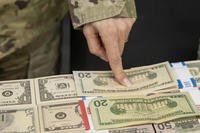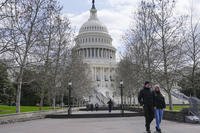The 2015 National Defense Authorization Act contains a particular provision that has been vocally unpopular with military families: a reduction of the amount of housing costs that Basic Allowance for Housing (BAH) is supposed to cover to 99% of the calculated costs for your location, rank, and family size. As you know, there is a formula by which housing costs are calculated. Since 2005, BAH rates have been set to cover 100% of the calculated average housing costs for each demographic group. The 2015 NDAA directs that calendar year 2015 BAH rates be set at 1% lower than the average calculated housing costs.
The complaints have been loud and strong. I can see both sides of the issue, but I lean towards the "no big deal" side of things. While I understand that any decrease in benefits is disappointing, the military is downsizing. Generous benefits are a recruiting and retention tool, and the military has significantly lower needs for either recruiting or retention than it has had in the past.
I am concerned about what it means for the future of BAH, but I also know that 100% reimbursement is a very recent thing. For the first 12 years of my marriage, my husband's housing allowance covered as little as 80% of the calculated housing costs. I realize that this makes me an old fogey and biased, but that is my perspective.
In addition, I am acutely aware that BAH rates change every year regardless of what percentage they are covering, and that almost no one will lose money because of the BAH rate protection policies.
Also, BAH has always been an average figure, meaning that by design approximately half the recipients will have costs higher than BAH and approximately half the recipients will have costs lower than BAH. While that is the intent, my experience has been that most of the people I know tend to spend less than their BAH, pocketing the difference for other spending purposes.
Lastly, I know that in areas with large military populations, market forces always adjust to the housing rates being provided by the Department of Defense. In many areas, rental prices are artificially high because of the power of BAH and because so many people house-hunt based on their BAH. These changes may help to bring those rental costs back to a level that would actually be supported by a true free market economy.
So, what does 1% actually look like in terms of less spending power? I'll use 2014 rates, because 2015 rates have not yet been published. (They will probably come out next week, if you're waiting!)
For an E-4 with dependents stationed at Fort Leonard Wood, 1% of the 2014 calculated costs is $9. For an 0-1 without dependents in Jacksonville, Florida, 1% equals about $13. For an E-7 with dependents in Dover, Delaware, 1% of 2014 BAH is about $17. For an o-4 with dependents living in Washington, DC, 1% of 2014 BAH is nearly $30. I'm not saying these are insignificant numbers, but they are not huge.
In the greater scheme of things, I am really conflicted. I am acutely aware that military benefits are under constant threat, and that those benefits make up a large portion of overall military compensation. Any cut to military benefits is essentially a pay cut, which I am obviously against. However, I also know that there our country as a whole is facing serious economic difficulties, and that cuts are going to have to be widespread, and that they are probably going to be painful. 1% of BAH seems like a small sacrifice when our troops have pressing equipment, staffing, and training needs.








